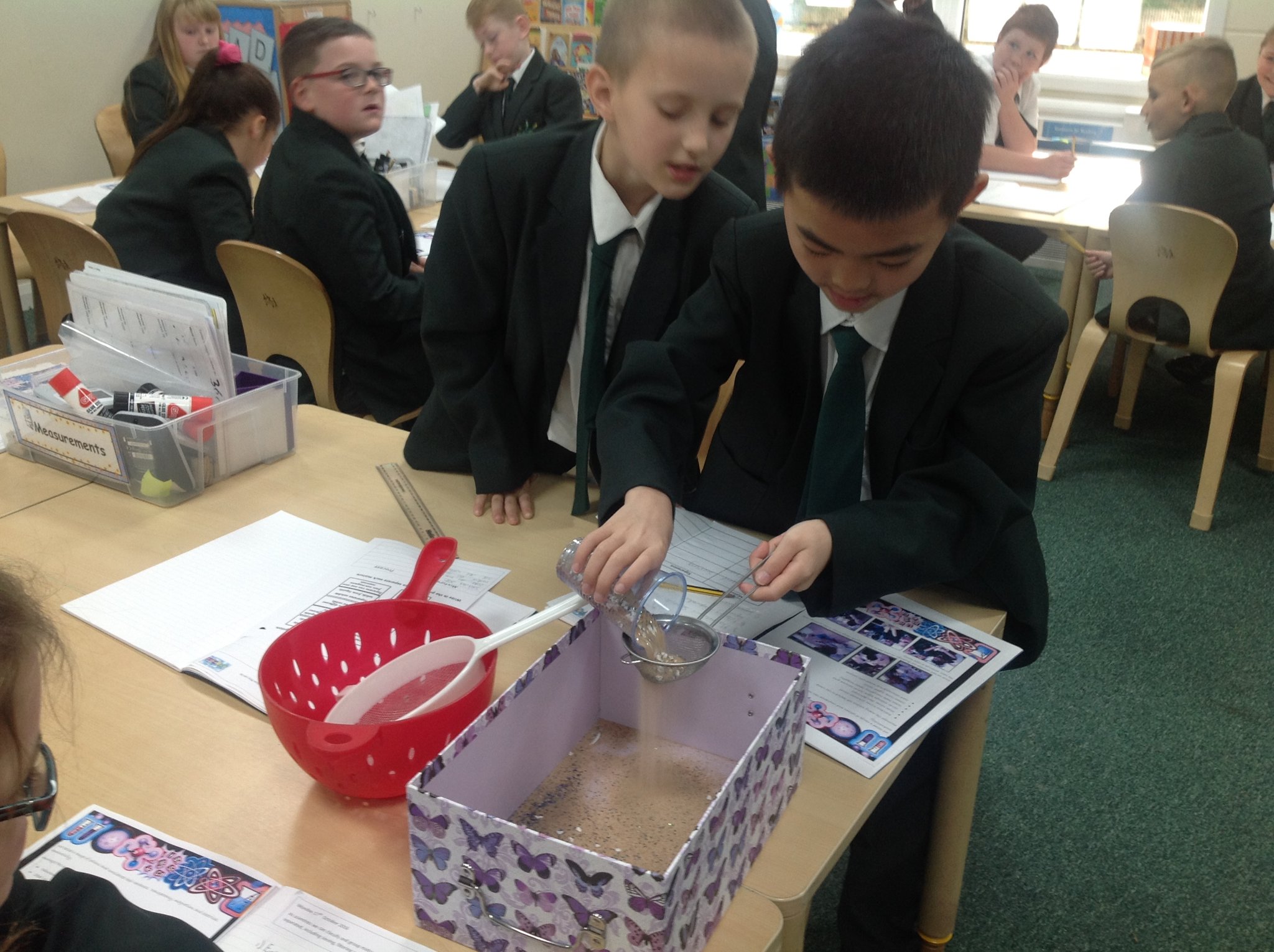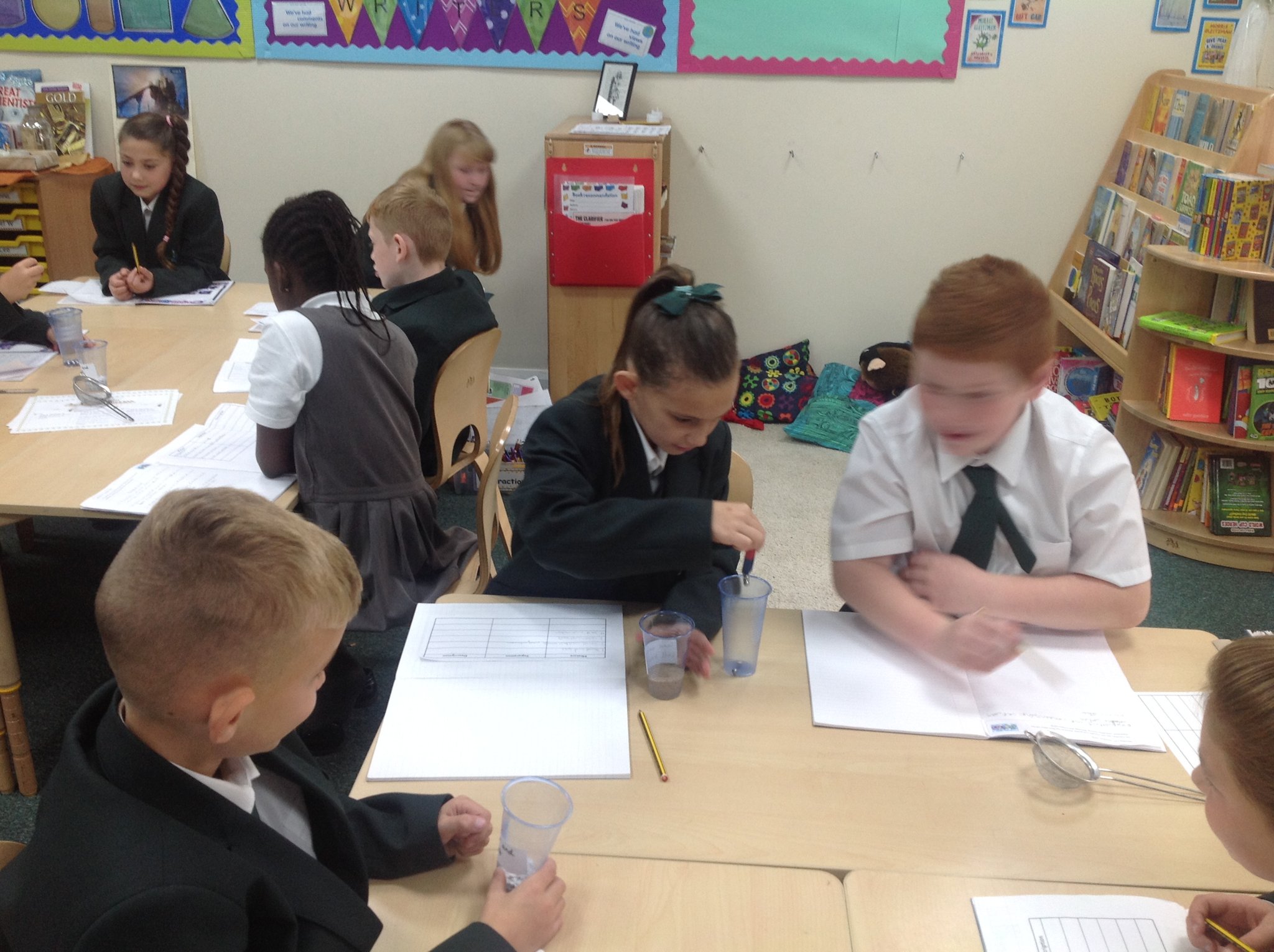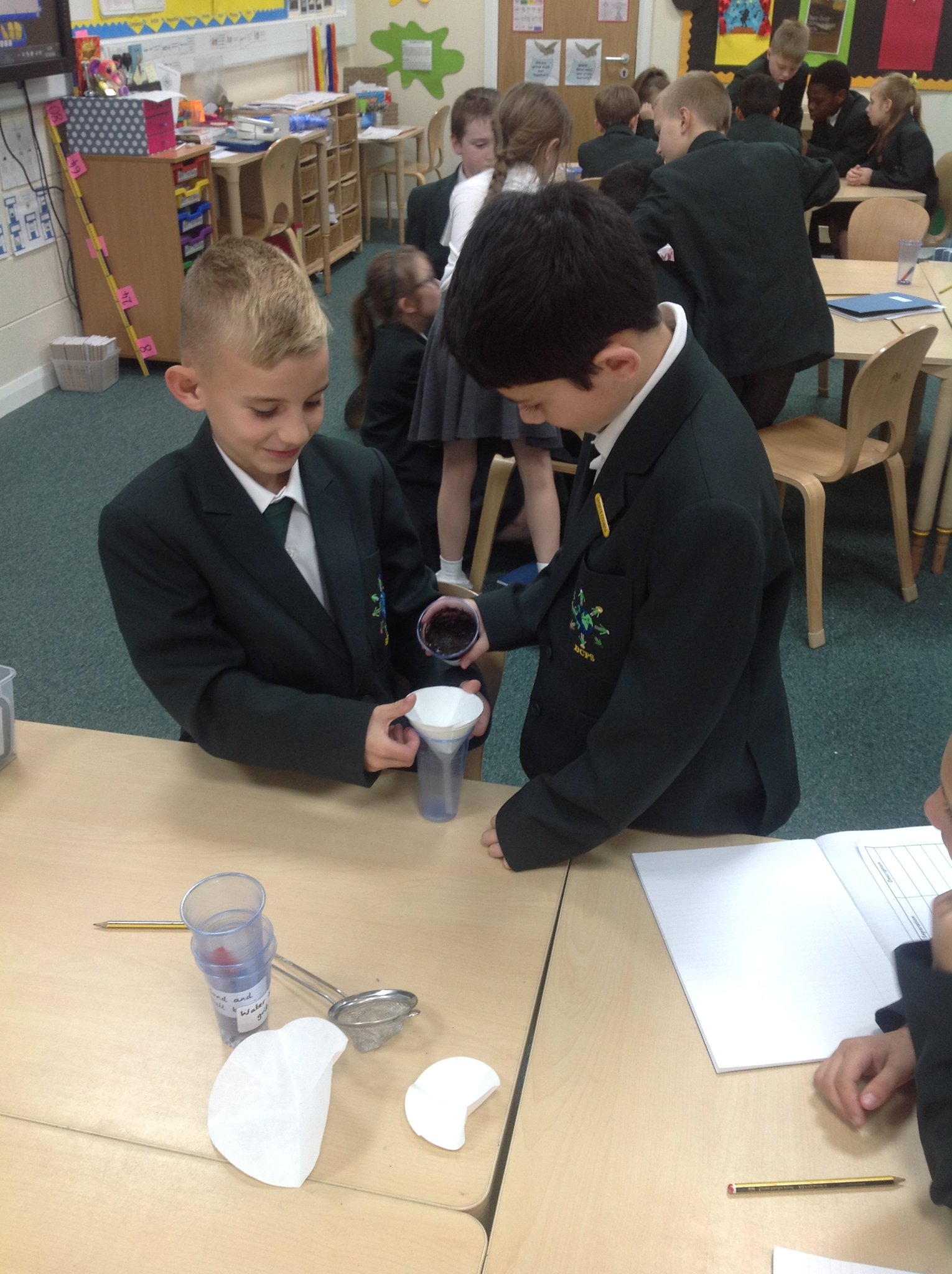Separating Mixtures
Year 5 looked at ways to separate different mixtures. We began by discussing what we know about separating different materials and discussed equipment that we might use at home. The children were familiar with a sieve but could not specify another method of separation.
The children were given the list of mixtures that they would be working with including: a sand and grit mixture; a sand and ball bearings mixture; a soil and water mixture; and a salt and water mixture (solution).
We briefly discussed the how they could be separated and the children quickly became aware of the fact that a sieve would not be useful for all of the mixtures.
Following this, we studied a range of different separation processes. These included: sieving, filtering, decanting, magnetism, evaporating and condensing. In their groups, the children discussed which process they should use to separate each mixture.
They set to work and began to separate the mixtures.
Sand and Grit-Sieving
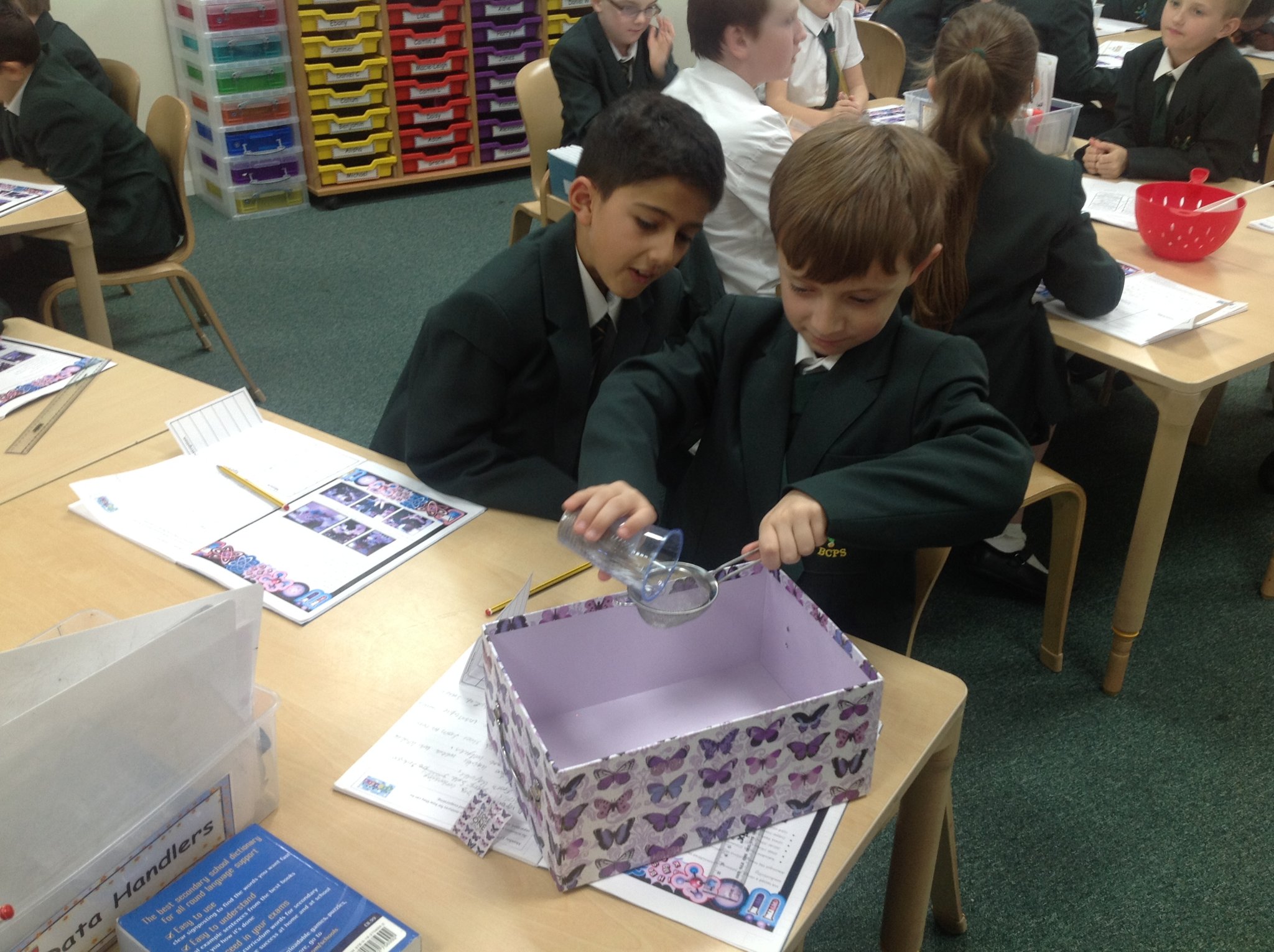
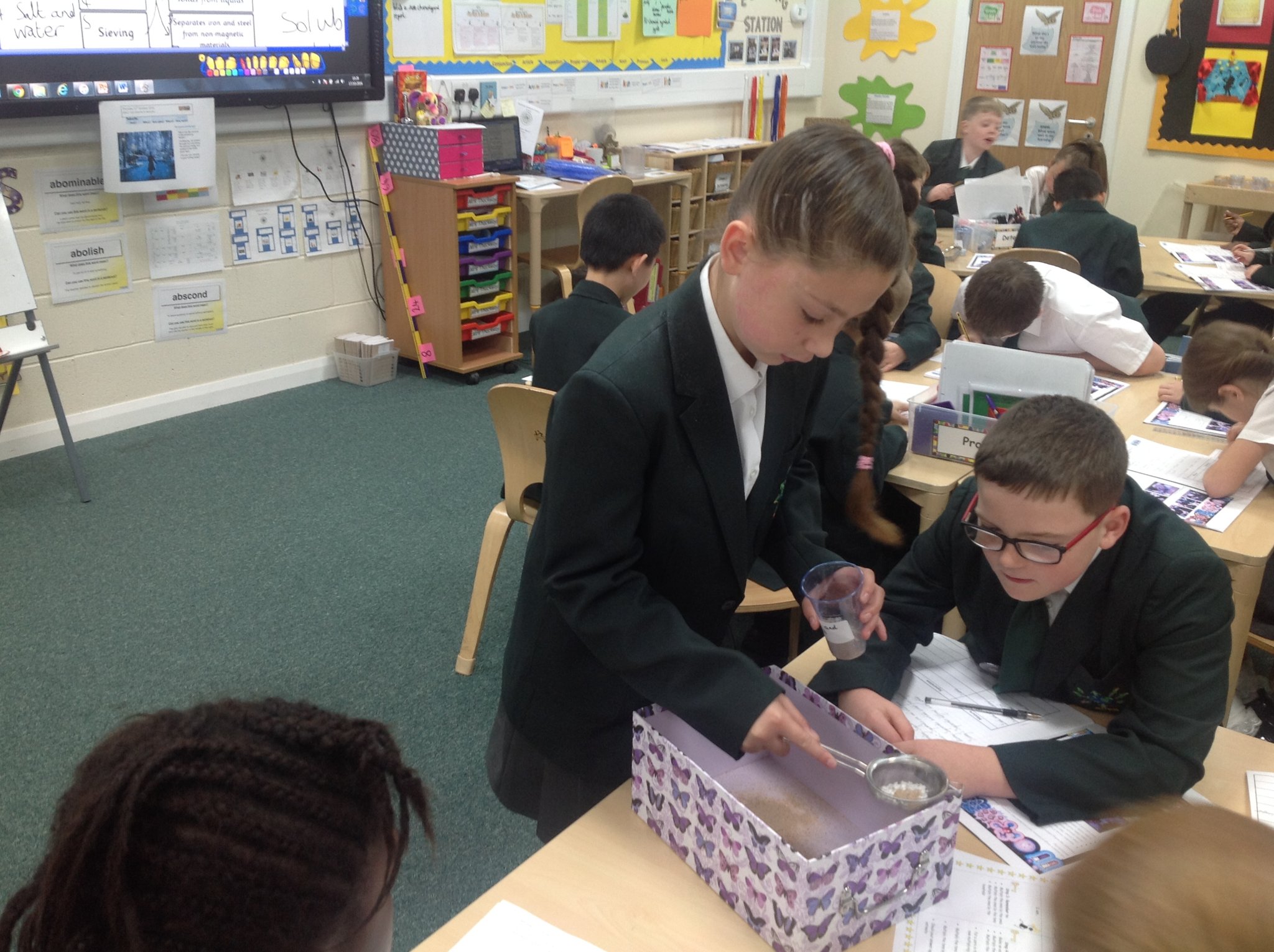
Sand and Ball Bearings - Magnetism
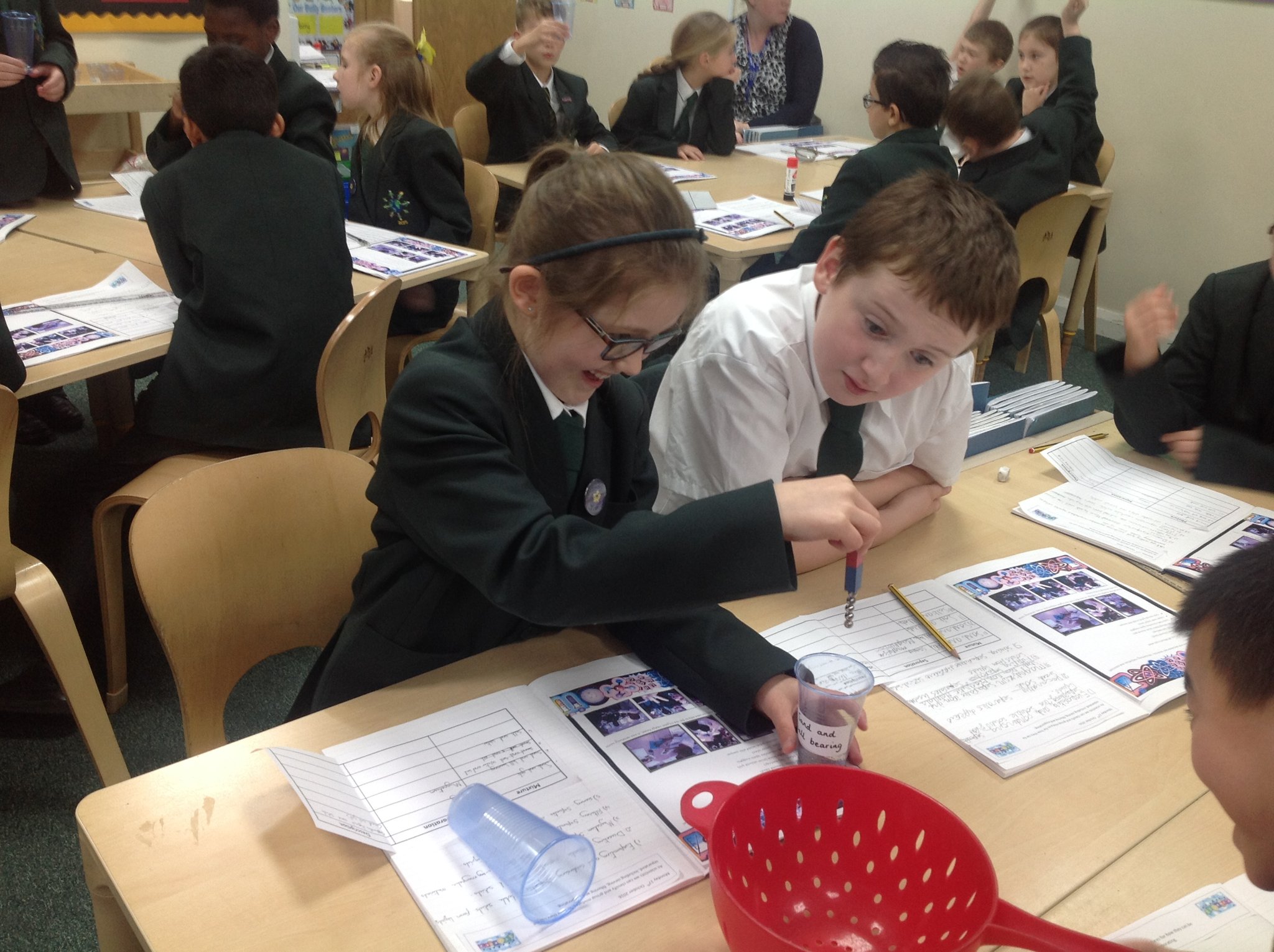
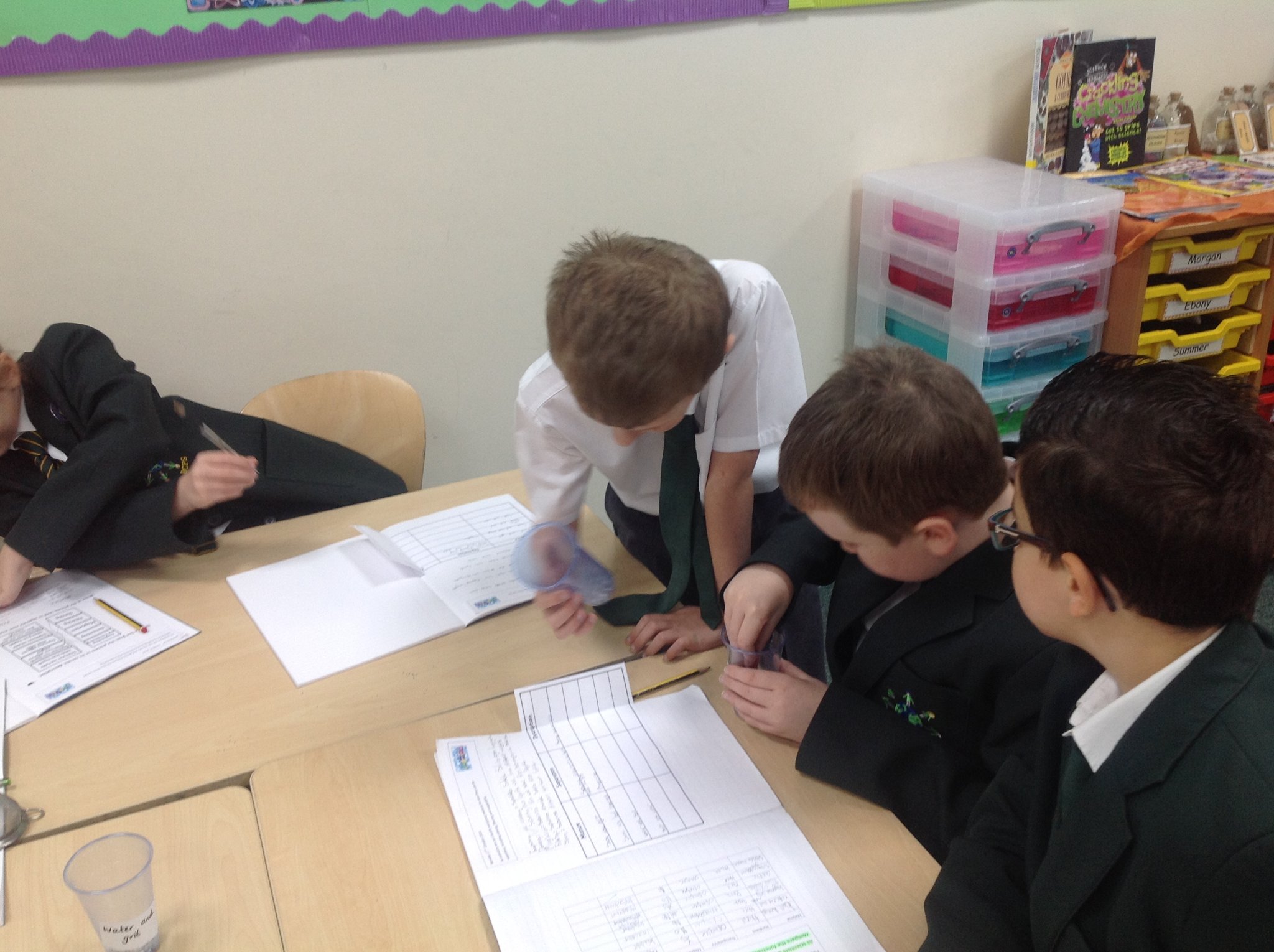
Soil and Water - Filtering
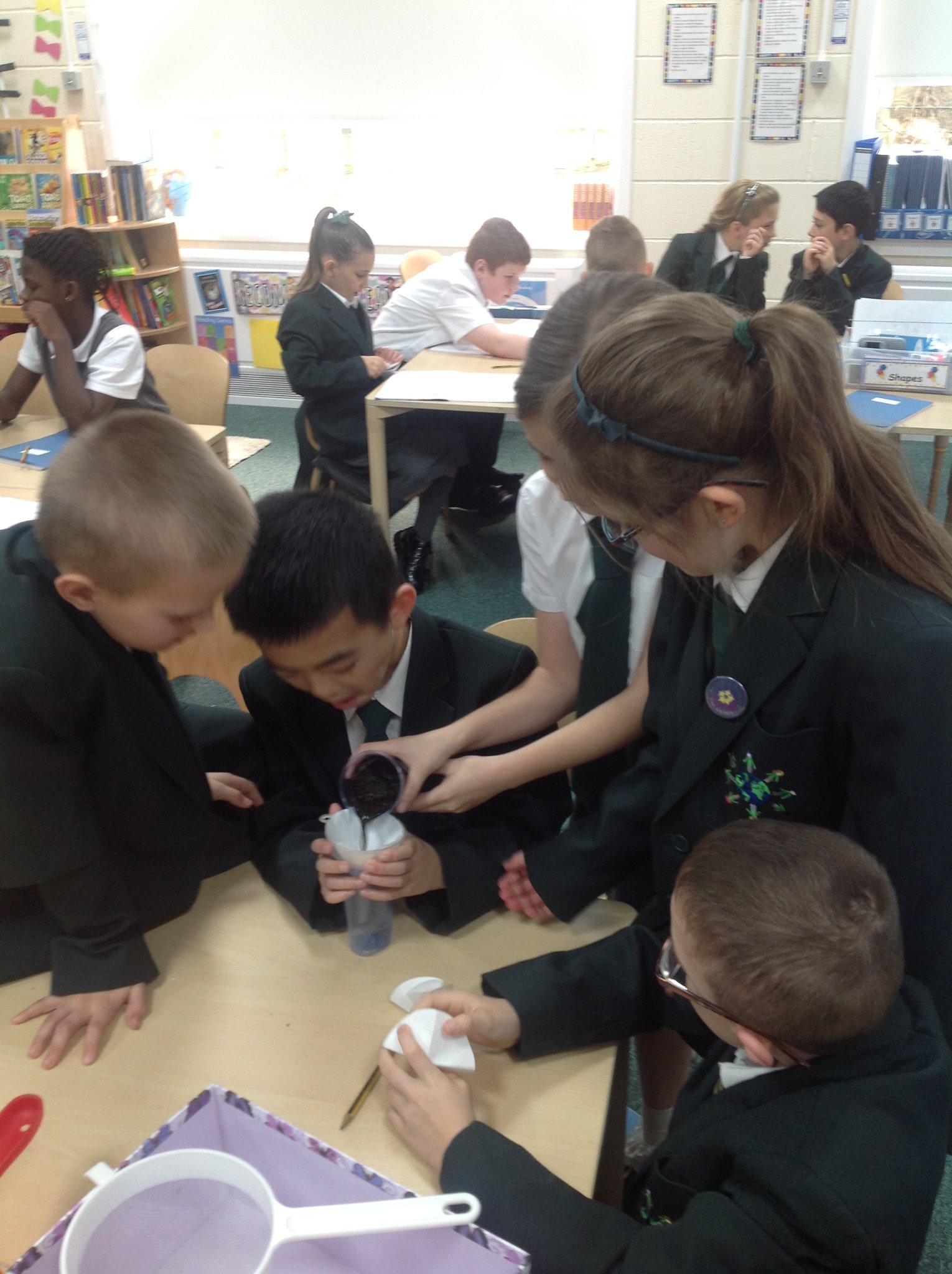
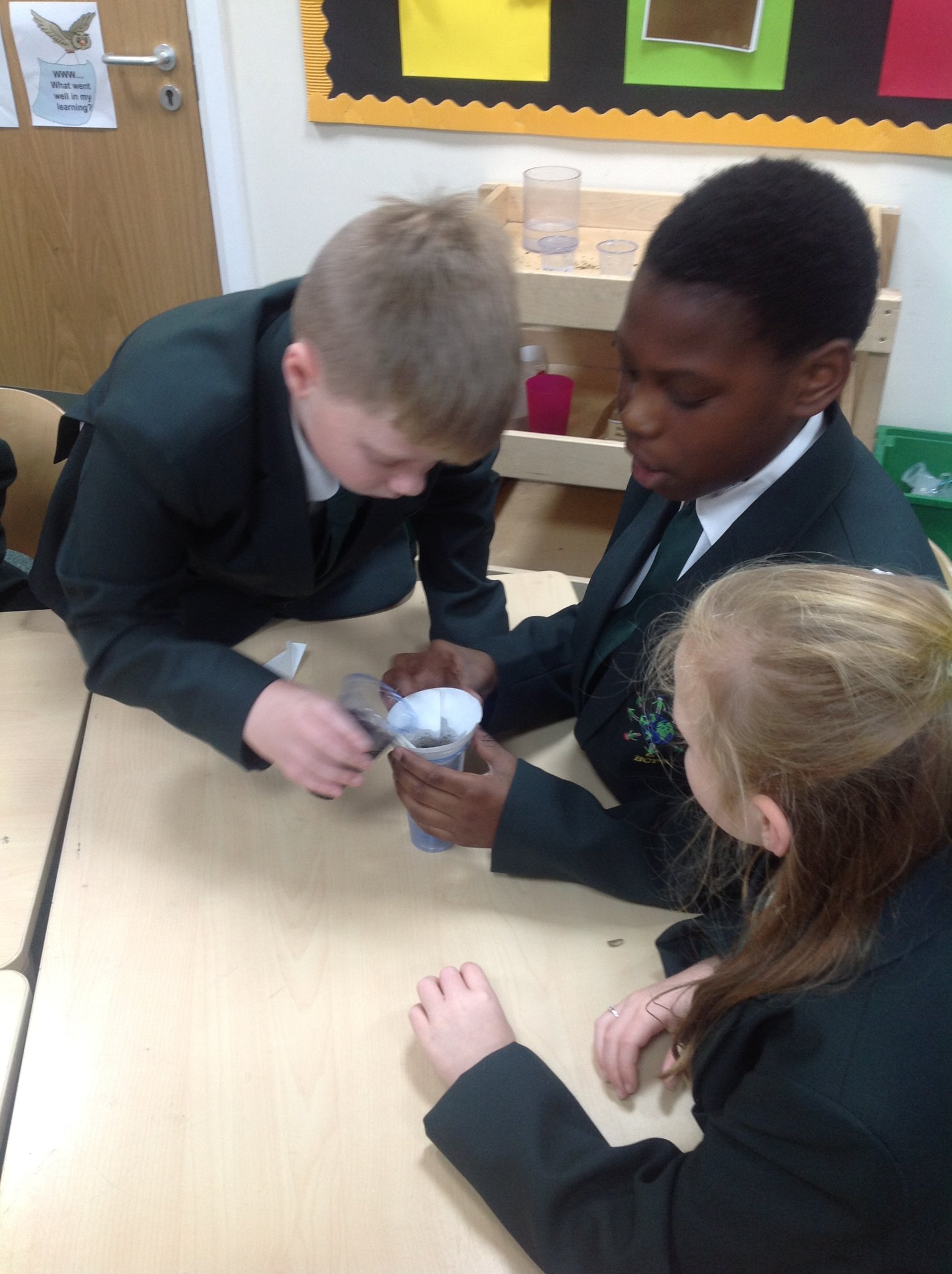
The children used a range of equipment to separate the different mixtures including: sieves, beakers, magnets, filter paper and funnels.
The children completed detailed diagrams of each process and described each process in detail.
Finally, we looked at separating the salt solution. The children explained that the salt had dissolved in the water and they began to consider how we could get the salt back and separate it from the water. A couple of suggestions were made based on the process used previously. Mrs Thackway demonstrated each process and the children agreed that none of these processes were successful in separating the mixture.
After lots of discussion and thinking, the children decided that the only way to separate the water and the salt would be to evaporate the water, leaving the salt behind.
